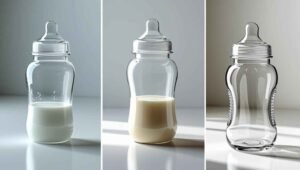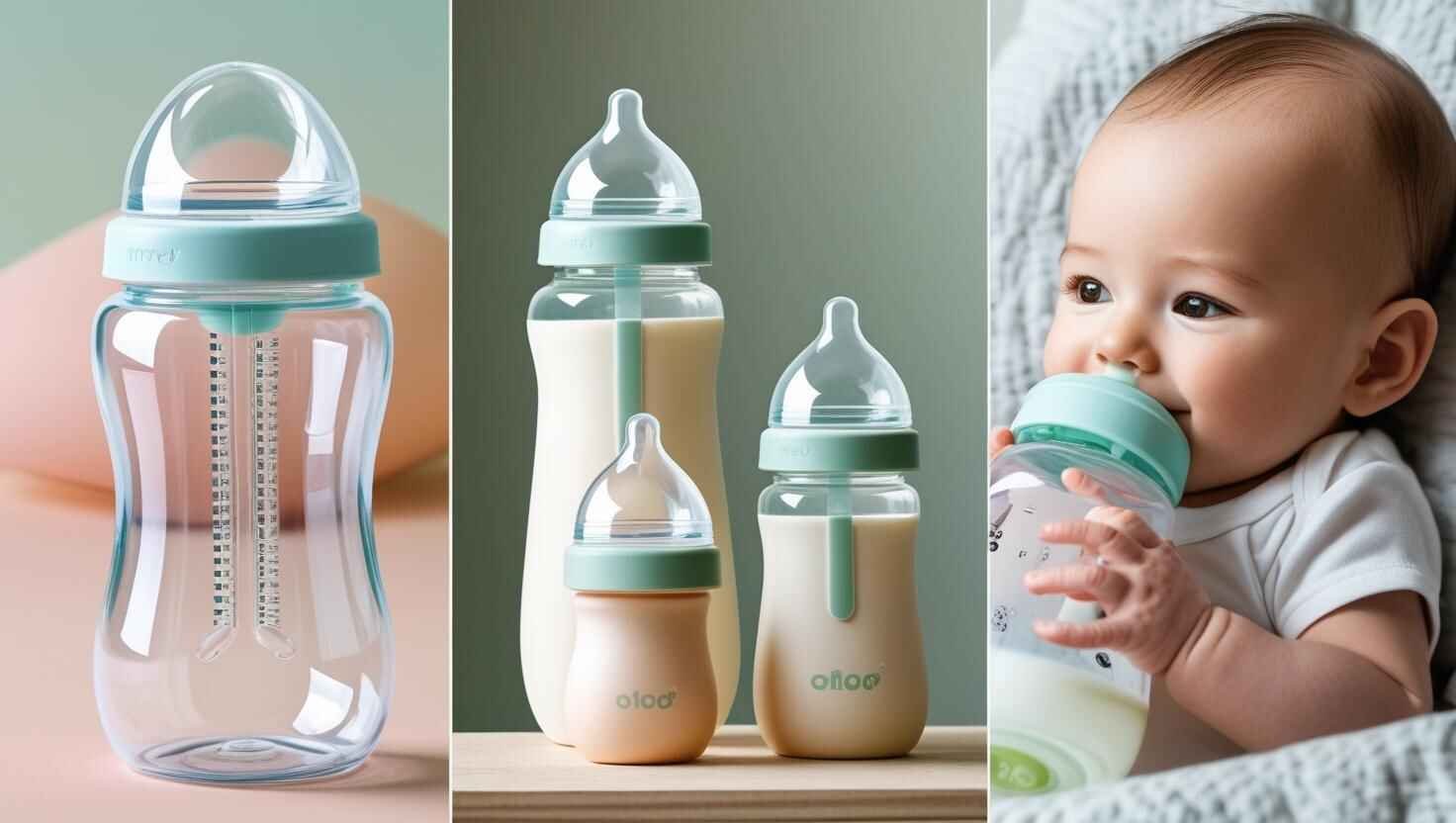✅ Nipple Flow Matters
When it comes to tongue- and lip-tied babies, the flow rate of the nipple is crucial. These babies often have weaker suction and may struggle to manage fast-flow nipples.
-
Slow-flow nipples are ideal for newborns and infants under 3 months.
-
Medium-flow is usually appropriate for babies 3–12 months.
-
Faster flows may be considered for older babies, but only if they can handle the pace without choking or spilling milk.
Not sure what’s best? A lactation consultant or tongue-tie specialist can help determine which flow suits your baby’s needs best.

🌬️ Venting System: A Must-Have Feature
Bottles with anti-colic or venting systems are strongly recommended for babies with oral restrictions. These features allow air to escape as your baby drinks, helping reduce the chance of:
-
Swallowed air
-
Gassiness
-
Colic
-
Spit-up
A bottle that minimizes vacuum pressure and keeps milk flowing steadily allows tongue- or lip-tied babies to feed more easily and with less frustration.
🍶 Safe and Baby-Friendly Materials
Look for bottles made from BPA-free plastic, medical-grade silicone, or glass. All of these materials are safe, but your preference might depend on durability, weight, or ease of cleaning.
-
Glass bottles are sturdy and chemical-free but heavier.
-
Silicone bottles are soft and easier to grip.
-
Plastic bottles are lightweight and practical but should be high-quality and BPA-free.
💬 Frequently Asked Questions
1. Can a baby with tongue-tie breastfeed normally?
It depends on the severity. Some babies can manage, but others may struggle to latch or extract milk effectively. Using a bottle with a soft, breast-like nipple and slow flow can help if you’re supplementing with pumped milk.
2. How should I bottle-feed a tongue- or lip-tied baby?
Choose a nipple designed for easy latching and start with a slow-flow rate. Hold your baby in an upright position and take feeding breaks to burp frequently.
3. Does tongue-tie make babies fussy during feeding?
Yes. Because of their restricted tongue movement, they often swallow air, tire easily, and become frustrated while trying to latch or keep suction.
4. What is the best age for tongue-tie revision surgery (frenotomy)?
Many pediatricians and feeding specialists recommend under 3 months as ideal. At that stage, babies usually recover quickly, and feeding improvements are often noticeable soon after.
5. Can correcting tongue-tie improve breastfeeding or bottle feeding?
Absolutely. Releasing the tongue or lip tie can improve latch, suction, and comfort during feeding—making both breast and bottle feeding more effective.
6. Do tongue-tied babies spit up more?
Often, yes. Difficulty maintaining suction leads to more air swallowing, which can cause spitting up, burping, and gas.
👶 Bottle Buying Tips for Tongue-Tied Babies
If you’re shopping for bottles that work well for oral restrictions like tongue or lip tie, prioritize these features:
| Feature |
Why It’s Important |
| Slow-flow nipple |
Prevents choking and lets baby pace the feed |
| Wide or breast-like nipple base |
Easier for shallow latchers to grip |
| Anti-colic vent system |
Reduces gas and discomfort from air swallowing |
| Soft, flexible materials |
Easier for babies with poor suction to compress |
| Easy to clean |
Many feeding issues require more frequent washing |
💡 Editor’s Picks: Bottles That Help
-
Comotomo Baby Bottle – Soft silicone, wide nipple, mimics the breast
-
Dr. Brown’s Options+ Narrow – Excellent internal vent system, controlled slow flow
-
Philips Avent Natural – Wide, breast-like nipple with integrated anti-colic valve
-
Lansinoh Momma NaturalWave – Designed to support natural sucking pattern post-breastfeeding
-
MAM Easy Start Anti-Colic – Flat nipple with vented base, great for newborns
🧠 Signs Your Baby Might Have a Tongue or Lip Tie
Not all cases are diagnosed at birth. Look out for:
-
Clicking sounds during feeding
-
Trouble latching or staying latched
-
Long feeding times with little satisfaction
-
Poor weight gain
-
Baby tiring quickly or falling asleep at the breast/bottle
-
Nipple pain (in breastfeeding moms)
If these symptoms persist, talk to your pediatrician or see a lactation consultant familiar with oral restrictions.
Choosing a bottle for a tongue- or lip-tied baby can make feeding smoother, less stressful, and more effective. Start with slow-flow nipples, opt for anti-colic features, and pay attention to nipple shape for easier latching. When in doubt, consult a feeding specialist to ensure you’re giving your baby the best chance for a healthy feeding journey.


